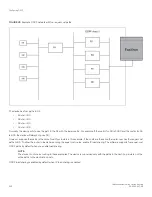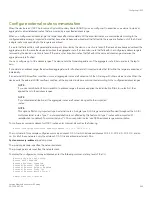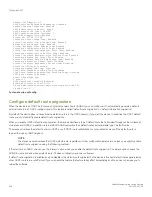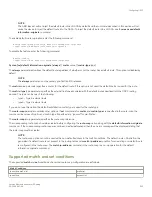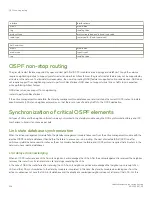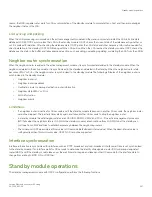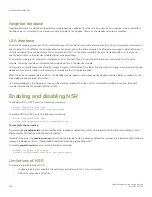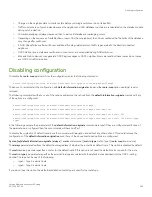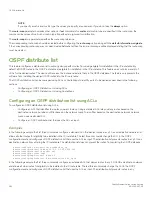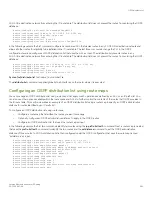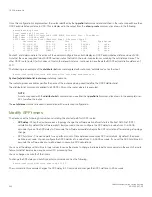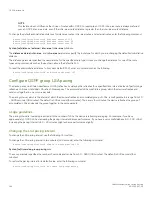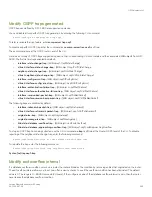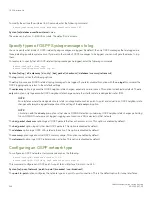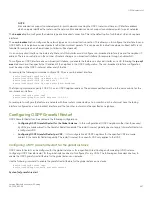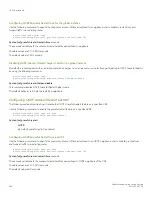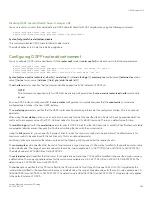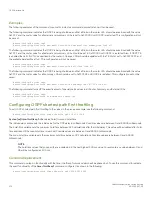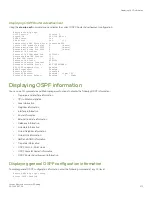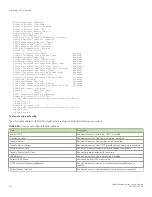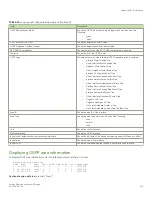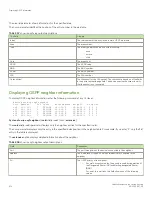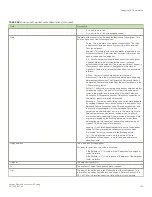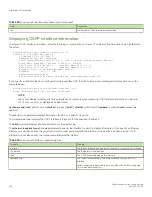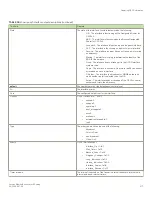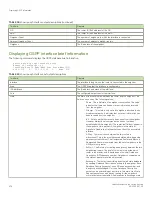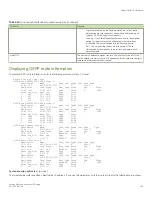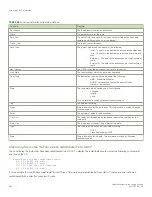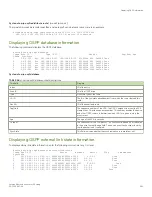
To modify the exit overflow interval to 60 seconds, enter the following command.
device(config-ospf-router)# database-overflow-interval 60
Syntax:
[no] database-overflow-interval
value
The
value
can be from 0 - 86400 seconds. The default is 0 seconds.
Specify types of OSPF Syslog messages to log
You can specify which kinds of OSPF-related Syslog messages are logged. By default, the only OSPF messages that are logged are
those indicating possible system errors. If you want other kinds of OSPF messages to be logged, you can configure the device to log
them.
For example, to specify that all OSPF-related Syslog messages be logged, enter the following commands.
device(config)# router ospf
device(config-ospf-router)# log all
Syntax:
[no] log
{
all
|
adjacency
[
dr-only
] |
bad_packet
[
checksum
] |
database
|
memory
|
retransmit
}
The
log
command has the following options:
The
all
option causes all OSPF-related Syslog messages to be logged. If you later disable this option with the
no log all
command, the
OSPF logging options return to their default settings.
The
adjacency
option logs essential OSPF neighbor state changes, especially on error cases. This option is disabled by default. The
dr-
only
sub-option only logs essential OSPF neighbor state changes where the interface state is designated router (DR).
NOTE
For interfaces where the designated router state is not applicable, such as point-to-point and virtual links, OSPF neighbor state
changes will always be logged irrespective of the setting of the
dr-only
sub-option.
NOTE
A limitation with the
dr-only
sub-option is that when a DR/BDR election is underway, OSPF neighbor state changes pertaining
to non-DR/BDR routers are not logged. Logging resumes once a DR is elected on that network.
The
bad_packet checksum
option logs all OSPF packets that have checksum errors. This option is enabled by default.
The
bad_packet
option logs all other bad OSPF packets. This option is disabled by default.
The
database
option logs OSPF LSA-related information. This option is disabled by default.
The
memory
option logs abnormal OSPF memory usage. This option is enabled by default.
The
retransmit
option logs OSPF retransmission activities. This option is disabled by default.
Configuring an OSPF network type
To configure an OSPF network, enter commands such as the following.
device(config)# interface ethernet 1/1/5
device(config-if-1/1/5)# ip ospf network point-to-point
This command configures an OSPF point-to-point link on Interface 5 in slot 1 in unit 1.
Syntax:
[no] ip ospf network
{
point-to-point
|
broadcast
|
non-broadcast
}
The
point-to-point
option configures the network type as a point to point connection. This is the default option for tunnel interfaces.
OSPF distribute list
FastIron Ethernet Switch Layer 3 Routing
266
53-1003627-04
Summary of Contents for FastIron SX 1600
Page 2: ...FastIron Ethernet Switch Layer 3 Routing 2 53 1003627 04 ...
Page 16: ...FastIron Ethernet Switch Layer 3 Routing 16 53 1003627 04 ...
Page 20: ...FastIron Ethernet Switch Layer 3 Routing 20 53 1003627 04 ...
Page 142: ...FastIron Ethernet Switch Layer 3 Routing 142 53 1003627 04 ...
Page 150: ...FastIron Ethernet Switch Layer 3 Routing 150 53 1003627 04 ...
Page 200: ...FastIron Ethernet Switch Layer 3 Routing 200 53 1003627 04 ...
Page 214: ...FastIron Ethernet Switch Layer 3 Routing 214 53 1003627 04 ...
Page 350: ...FastIron Ethernet Switch Layer 3 Routing 350 53 1003627 04 ...
Page 476: ...FastIron Ethernet Switch Layer 3 Routing 476 53 1003627 04 ...
Page 588: ...FastIron Ethernet Switch Layer 3 Routing 588 53 1003627 04 ...

